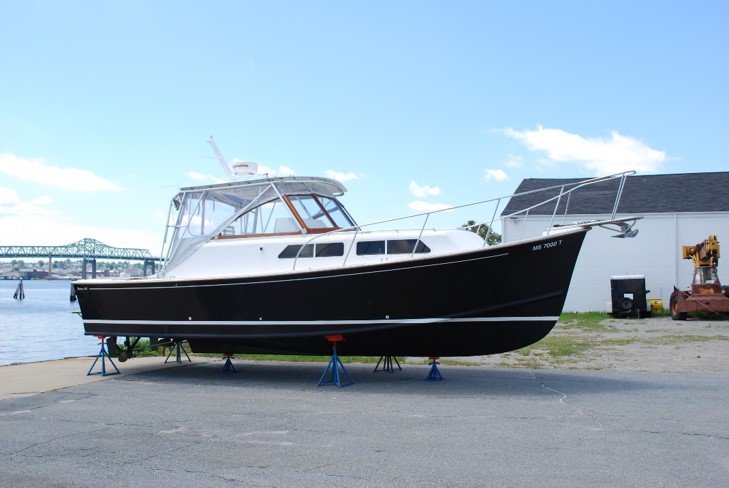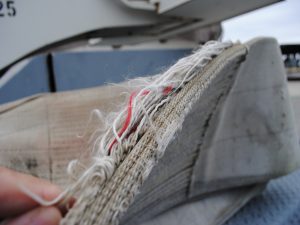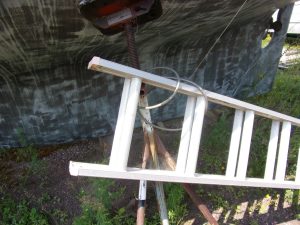
Summer Season Slow-Down: Time to Review Haul-Out Standards, Materials and Equipment
Published on August 26, 2019It is hard to believe how quickly the summer season has passed. While it seems Memorial Day was just a few days ago, the reality for many is the boating season is quickly coming to an end. In many areas of the country, children have returned to school, which can signal the unofficial slowdown of the boating season. For many marinas, boats will soon be coming out of the water and prepared for winter storage. Now is a perfect time to review your equipment and materials used for boat blocking.
Travel Lift Sling Condition
Each lifting sling is manufactured with a red safety thread woven into the sling itself. The purpose of the red thread is to serve as a visual indicator that the structural integrity of a sling has been compromised. In preparation for haul-out season, please conduct a visual inspection on the travel lift sling. Any sling that has a visible red thread should be removed from service.

Boat Stands
Similar to inspecting slings, be sure to inspect all boat stands prior to use. Stands that show visible signs of damage, structural deterioration, or those that have been modified from the original equipment condition should be removed from service. The plywood pad on the stand should be in good condition. All moving parts should be properly lubricated. If boat stands are placed in areas where the soil or ground surface is soft, a piece of plywood can be used to increase ground stability. As best practice for maximum stability, boat stands should be placed every eight to ten feet along the vessel.
Blocking
When it comes to keel blocking, there are many opinions related to materials used and the frequency of keel blocking along the length of the vessel.
Materials such as foam blocks and 55-gallon drums are not recommended for boat blocking. Additionally, cinder blocks should not be used for blocking. While cinder block are relatively inexpensive, they are subject to cracking, which can lead to failure. In cold weather, cinder blocks can wick moisture, which may freeze causing the block to fail.

Vessels should be blocked as close to the ground as possible. In similar fashion to the placement of stands, the keel should be blocked every 8 to 10 feet to minimize the risk of high local loading, which could lead to damage. Solid wood blocks are the best means of keel blocking a vessel. The American Boat and Yacht Council (ABYC) standard TY-28 provides guidance on proper blocking of vessels. However, requirements may vary based on the recommendations of the vessel manufacturer. Be sure to review the
requirements of each vessel.
The Long Haul
In many areas of the country, vessels spend more time on blocks than in the water. Here are a few considerations for storing vessels for the long haul. First vessels should be set in a manner that allows water to drain from the cockpit.
For sailboats, the vessel will be more stable if the mast can be removed. Other items such as sails, Bimini tops, dinghies, floats or paddleboards should also be removed from the vessel. If the boat is covered during the winter months, shrink wrap or tarps should not be tied to the boat stands as the cover can pull on the stands during wind events. Items such as ladders should also not be secured to the stands. Lastly, it will be necessary to periodically check and/or tighten the safety chains.
Robert Smith is executive director of Fisher Phillips Safety Solutions. He can be reached at rsmith@FPSafetySolutions.com or 404/240-4147.
| Categories | |
| Tags |





